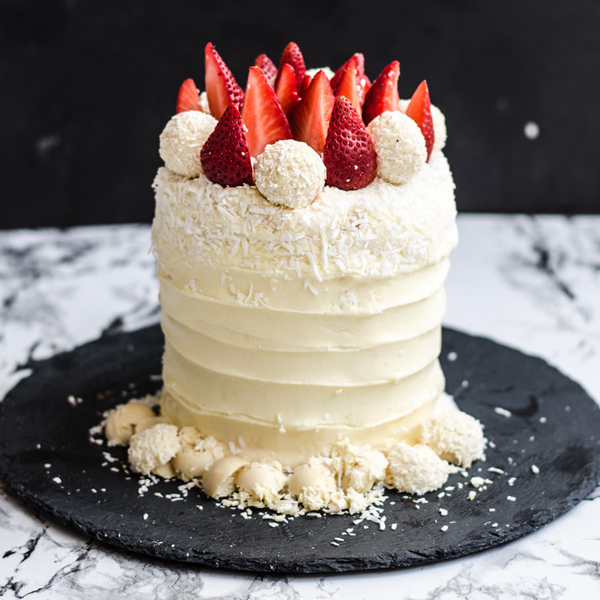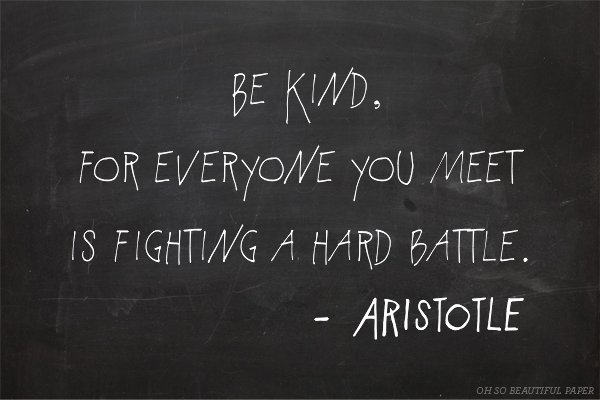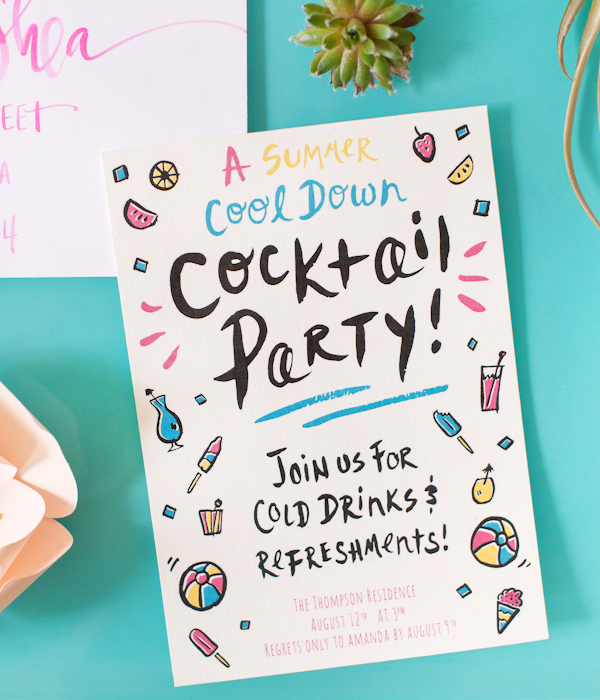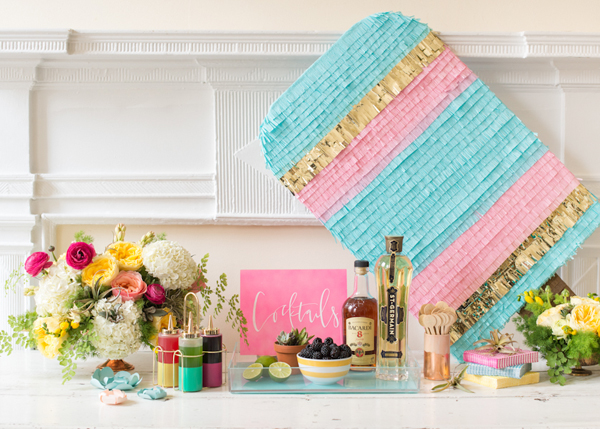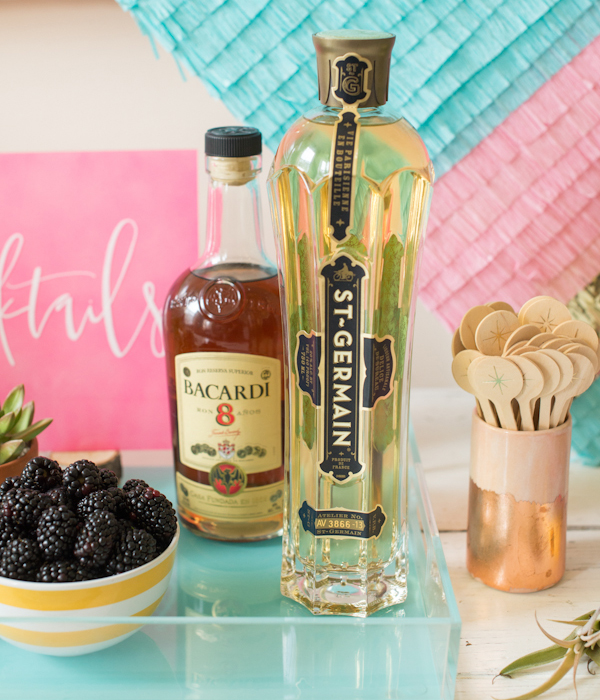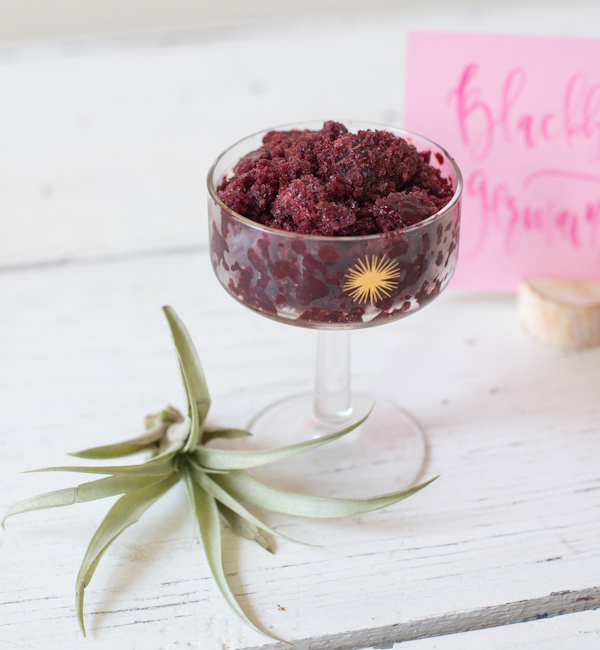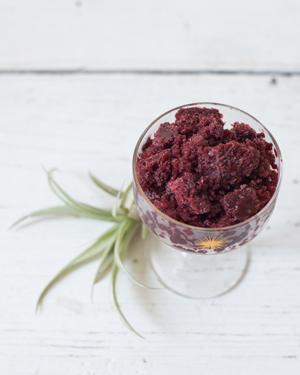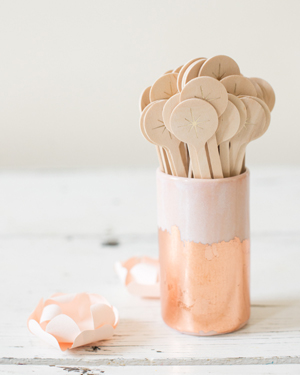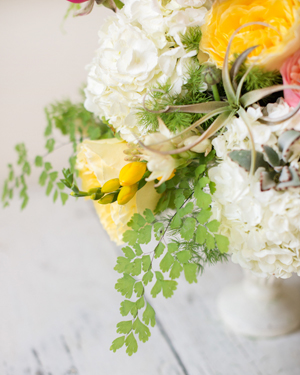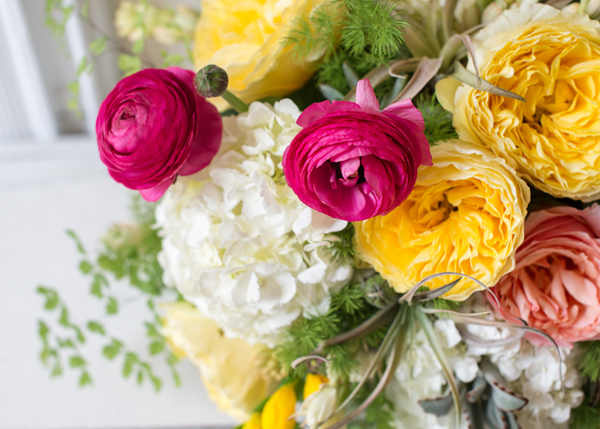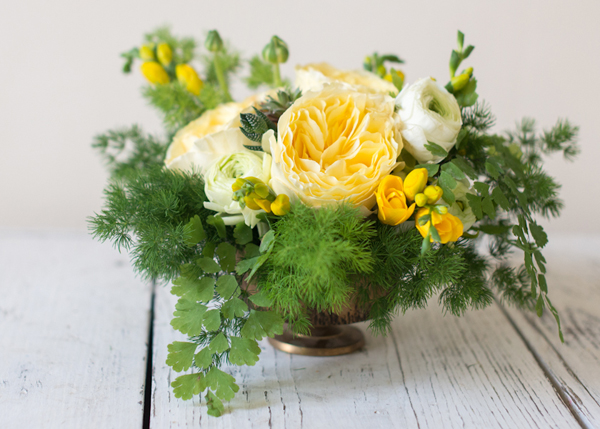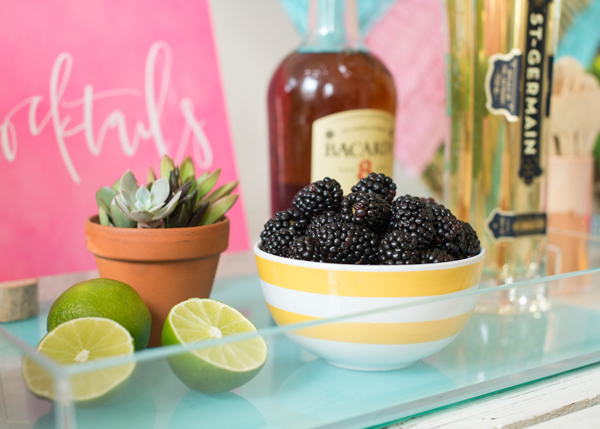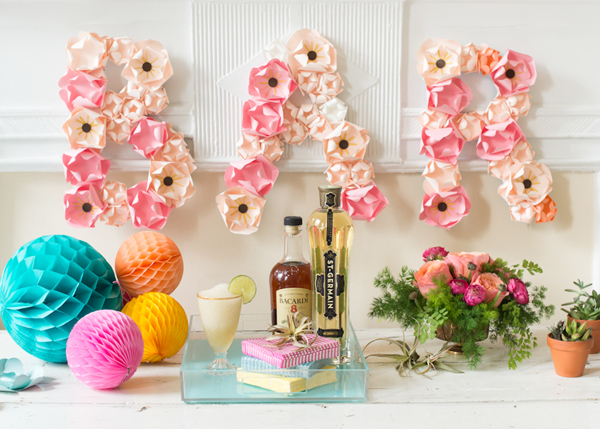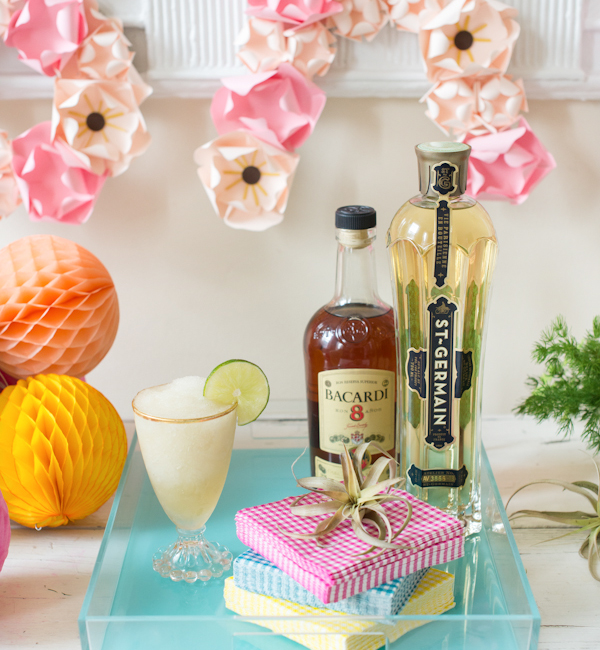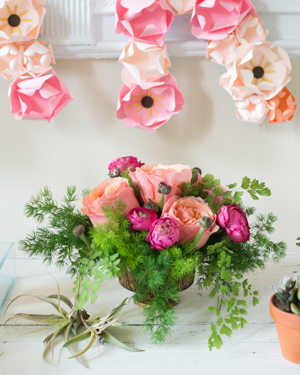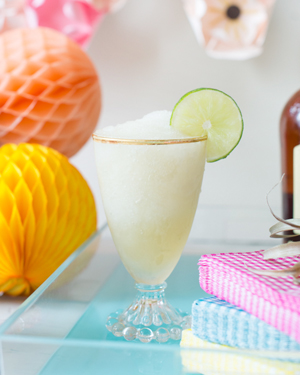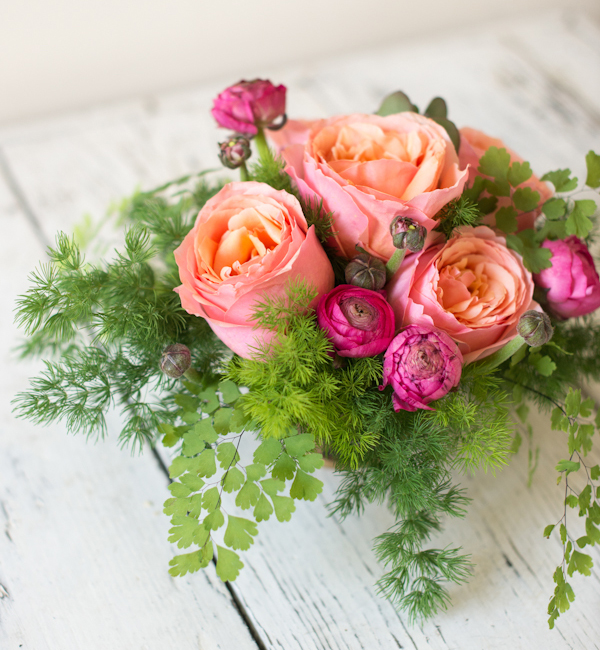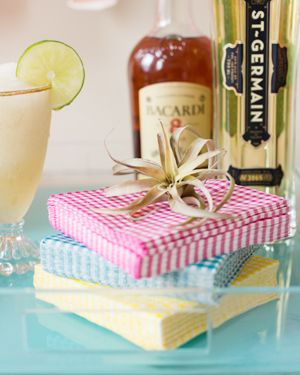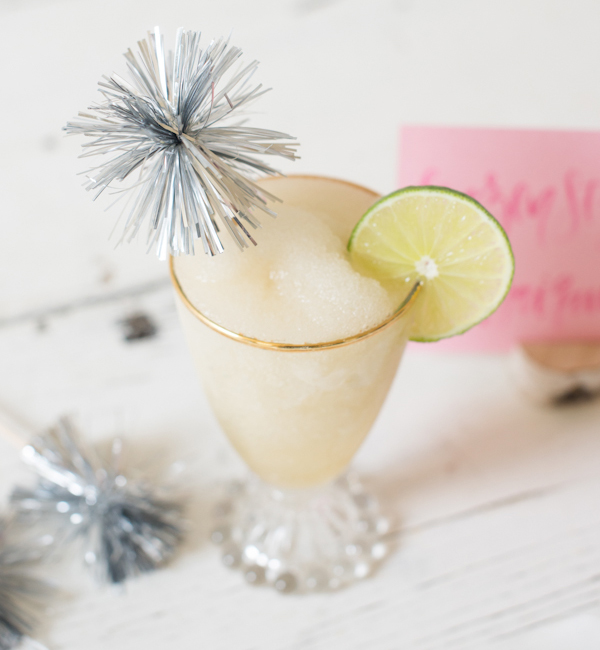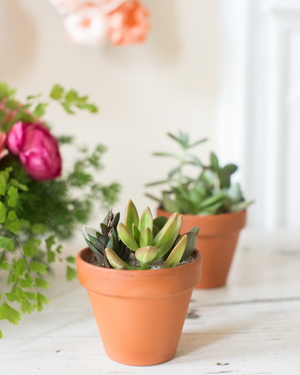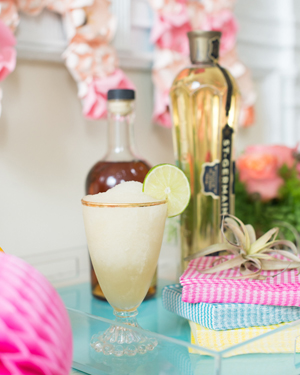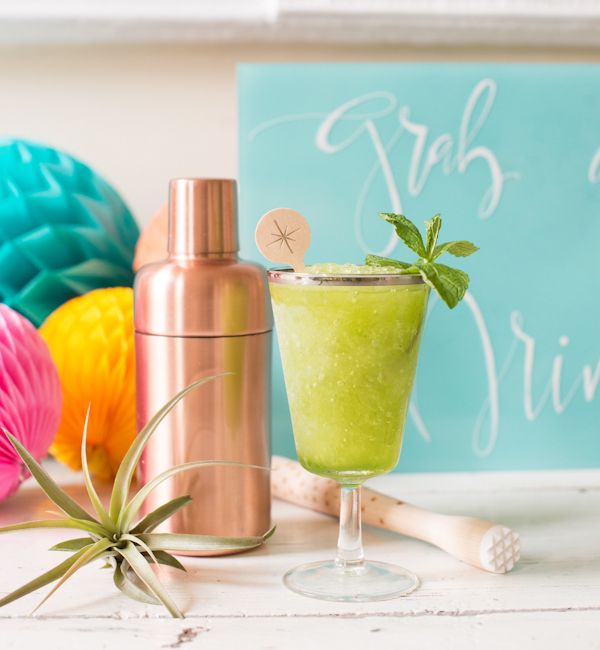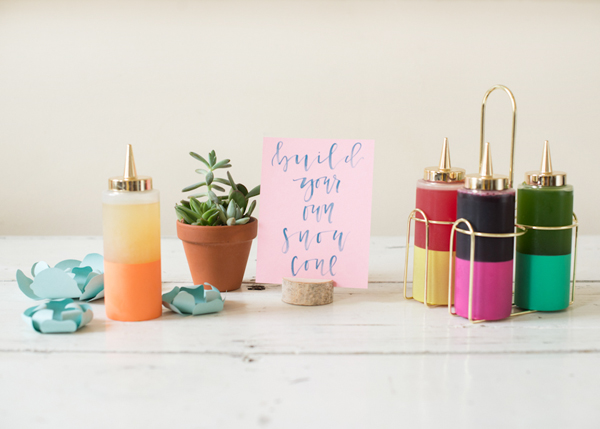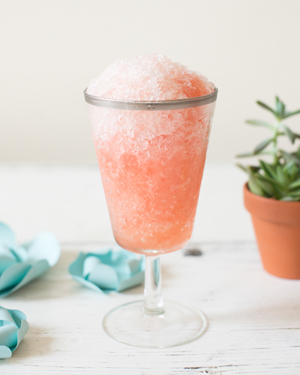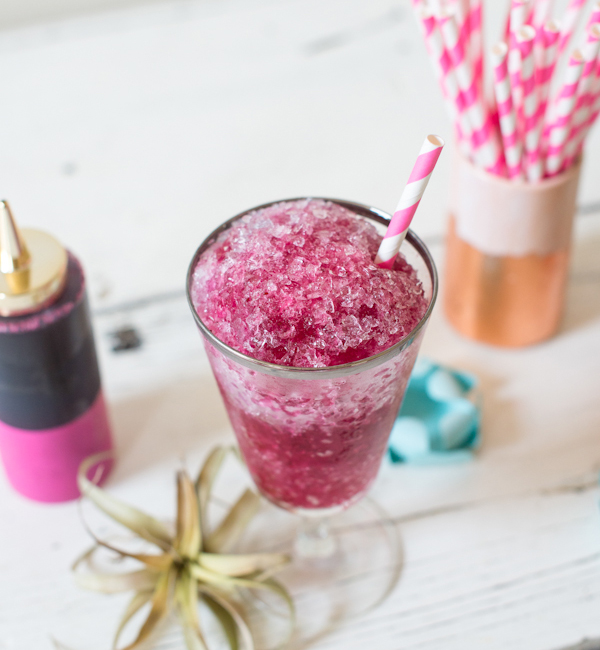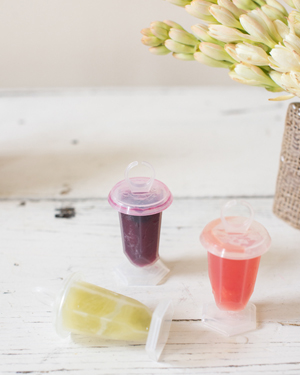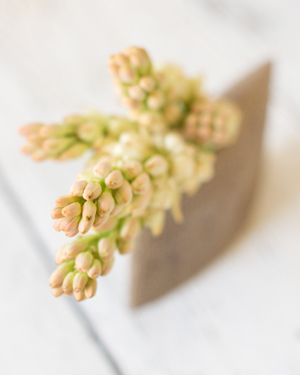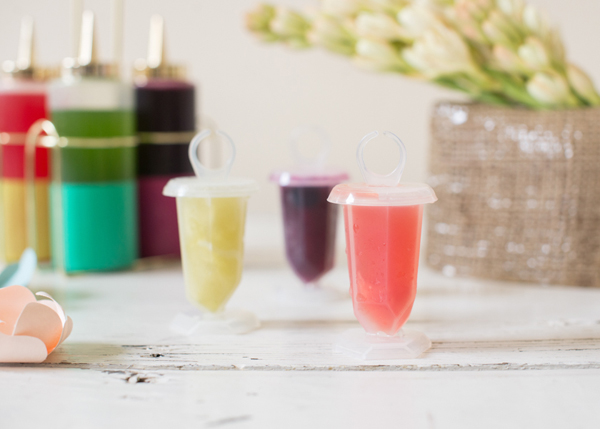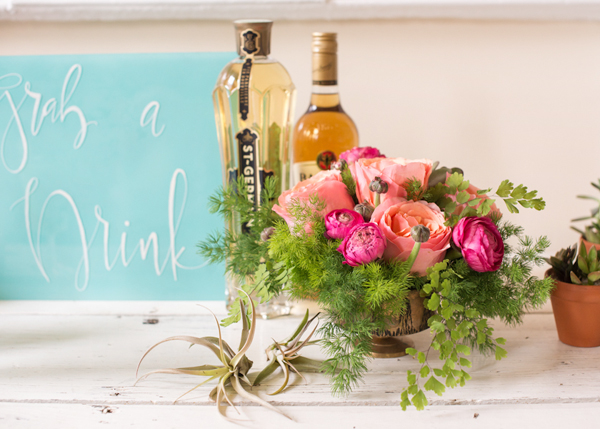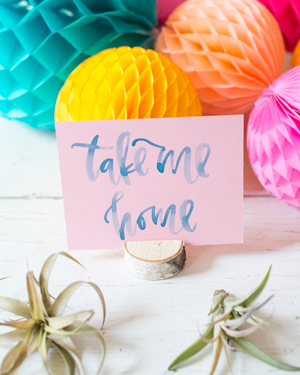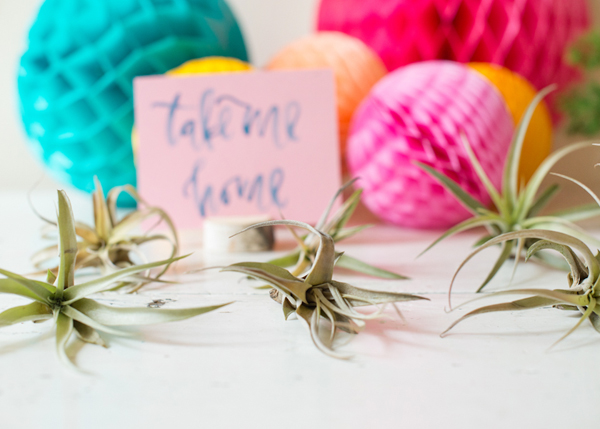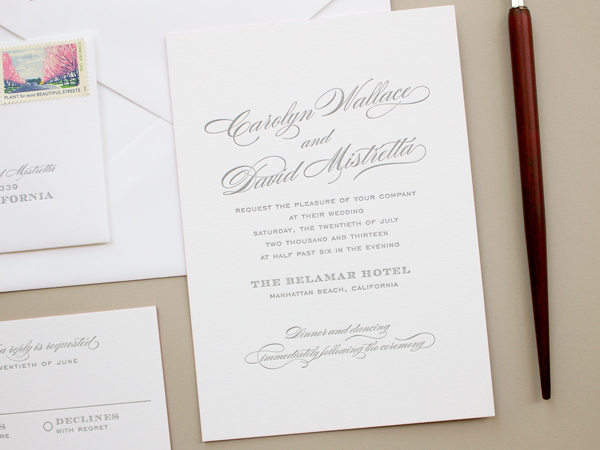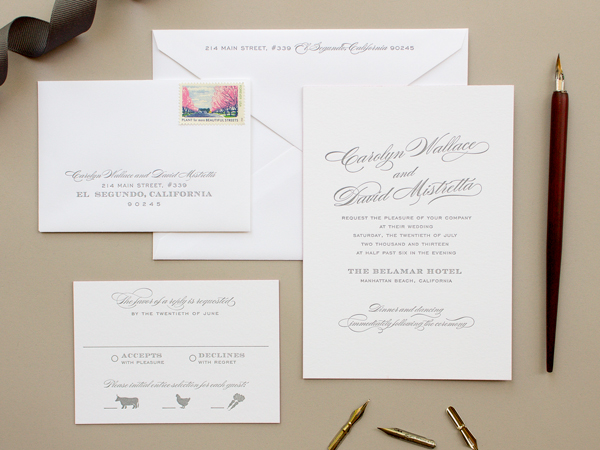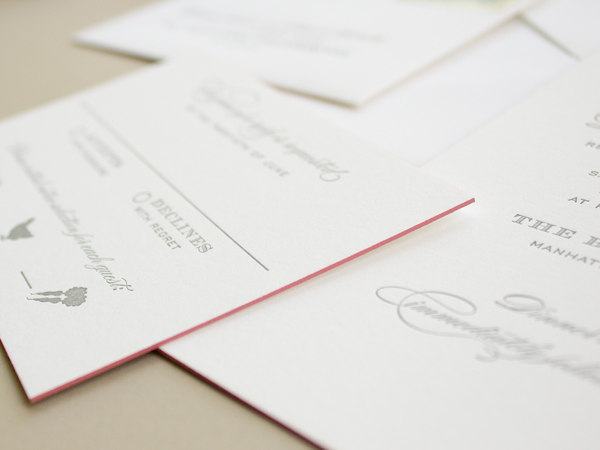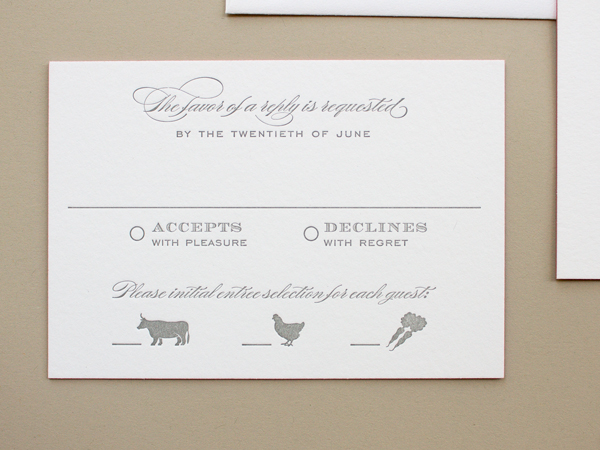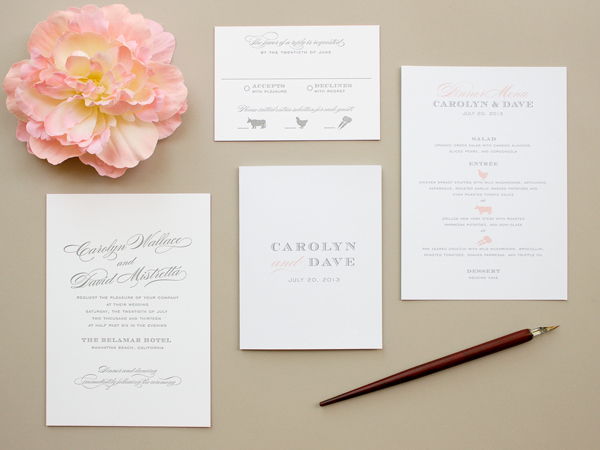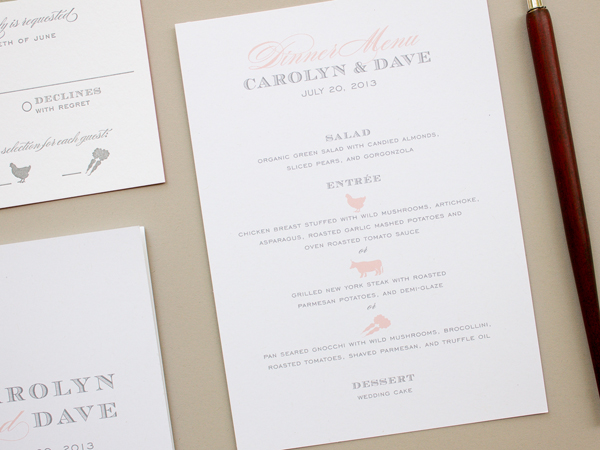Black and white is always classic. It seems like no matter what design you choose you can’t go wrong with this simple, sophisticated palette. We typically gravitate towards bright pops of color, soft pastels, or neutrals – but for this tutorial we wanted to explore the modern, less traditional, side of good old black and white.  We added hand painted floral elements to bring in our signature style and make each invitation unique. With the days getting shorter and autumn knocking on the door, this wedding invitation suite feels just right to us. – Bailey and Emma of Antiquaria

Materials
Modern Type Invitation Stamp and Reply Card Stamp
Art Deco Return Address Stamp
Watercolor Paper – we used 22″ x 30″ Smooth Hot Press Arches Watercolor Paper
Pencil and ruler
Sumi Ink
Paint Brushes
Stamp Pads in Black and Frost White
Craft knife and cutting mat
6×9 String Tie Envelopes
4bar Envelopes
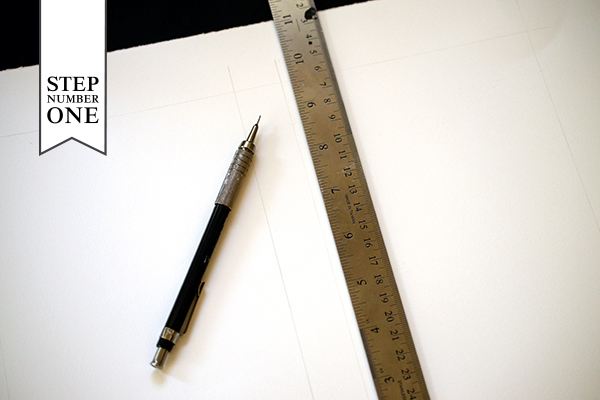
Step One: Since we will be hand painting with a bleed (a design that continues off the side or page) for this invitation tutorial, we will start by drawing our frames on hot press watercolor paper. For this design, we marked up two 5 ½” x 8 ½” rectangles spaced about an inch apart from one another. We used artist paper, which instead of coming in a pad, comes in large sheets, usually around 22″ x 30.” To make them workable, we tear that size down into four sections, resulting in sheets that are 11″ x 15.” You can also purchase watercolor paper in pads or blocks. Use what you like best!
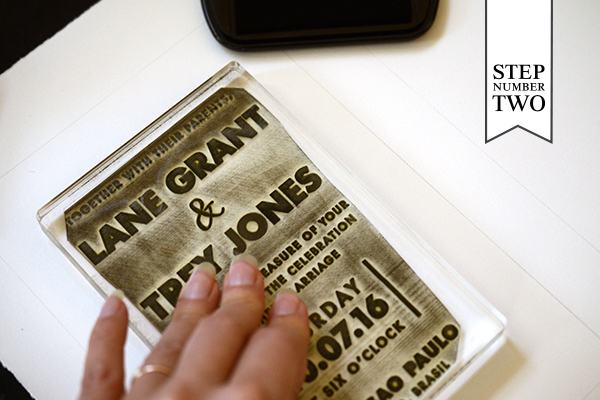
Step Two: Next, stamp your invitation (we used our Modern Type Invitation) in the center of each penciled rectangle. Press firmly but moderately when printing on a flat surface, using your hands to make sure that the entire stamp has been printed. Let dry.

This sheet is stamped and awaiting floral painted details. Before you start painting, make sure that the stamped ink is totally dry.
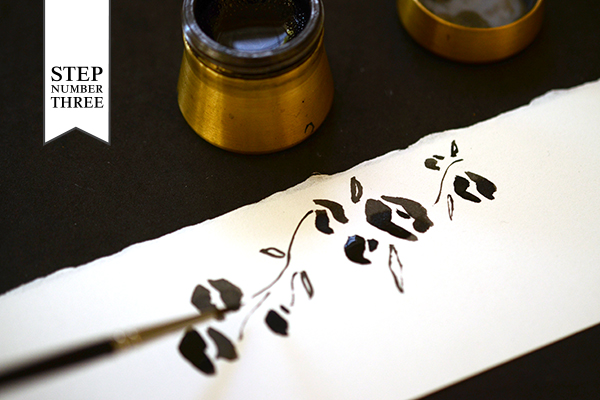
Step Three: It’s always a good idea to warm up and practice before painting, especially on something as important as your wedding invitations! Get a scrap piece of watercolor paper (preferably the exact same paper as your invitations) and get creative! Grab some flowers and foliage from your yard and start working out a design that you like. We used Sumi Ink instead of paint for this design, but any type of gouache (opaque watercolor) or watercolors will work too! Experimentation is the key to getting a result that you’re happy with.

Step Four: Get to work painting your invitations once you feel warmed up and know what you want to paint. We started by painting clusters of flowers and foliage along the top of each invitation, as shown above. You could also do something as simple as a single flower at the top or as ornate as a wreath around the entire invitation. The nice part is that it’s totally up to you! It can also help to pencil in a rough design prior to painting on your invitation if you’re not 100% confident going freeform on the design.

Step Five: We decided to add a very small floral accent right below the location on our design, so after the top was dry, we added one to each invitation. Let your finished design dry completely.

Once all of your paintings are complete, all that’s left to do on the invitation is cut it out! Use a craft knife and metal ruler (or very precise paper cutter) to cut along your pencil lines…et voila! An invitation with a full bleed!
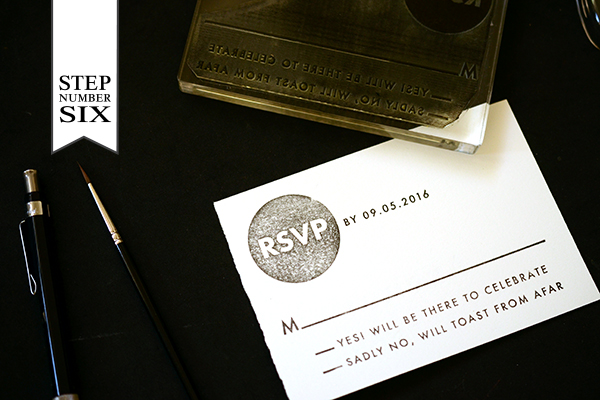
Step Six: Stamp your reply card (we used our Modern Type Reply) on a 4bar size card made of the same watercolor paper used on the invitation or a card of a similar color (soft white). We used the same black stamp pad as on the invitation design.
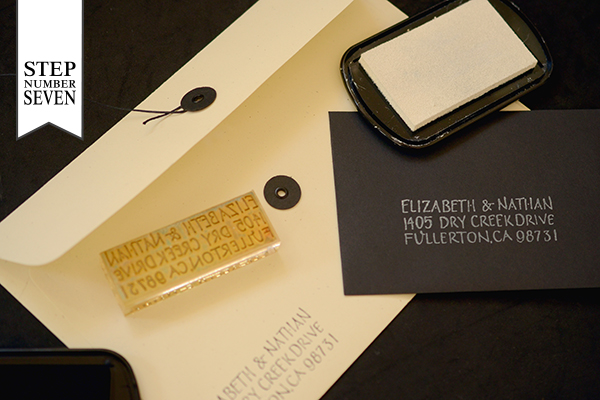
Step Seven: Stamp your return address in black (we used our Art Deco Return Address) on the back of a 6″ x 9″ envelope and reply address in white on the front of a black 4bar envelope. We’re in love with these gorgeous string tie envelopes and love how the milkweed color softens the look of what is otherwise a 100% black and white design.
Now all that’s left is to address them to your loved ones, add postage, and send them on their way! We guarantee that your guests will be floored by the beauty of your hand crafted work of art!
Photo Credits: Antiquaria for Oh So Beautiful Paper
Designs and artwork copyright Antiquaria, with DIY tutorials created exclusively for Oh So Beautiful Paper. All artwork and DIY tutorials are for personal use only. AntiÂquaria is a memÂber of the Designer Rolodex – you can see more of their beauÂtiÂful work right here!
